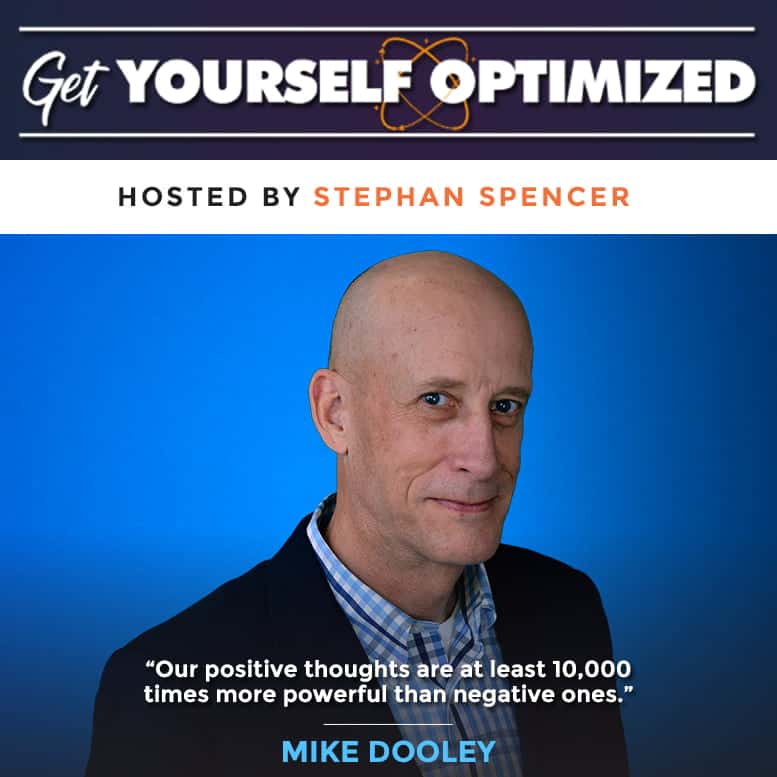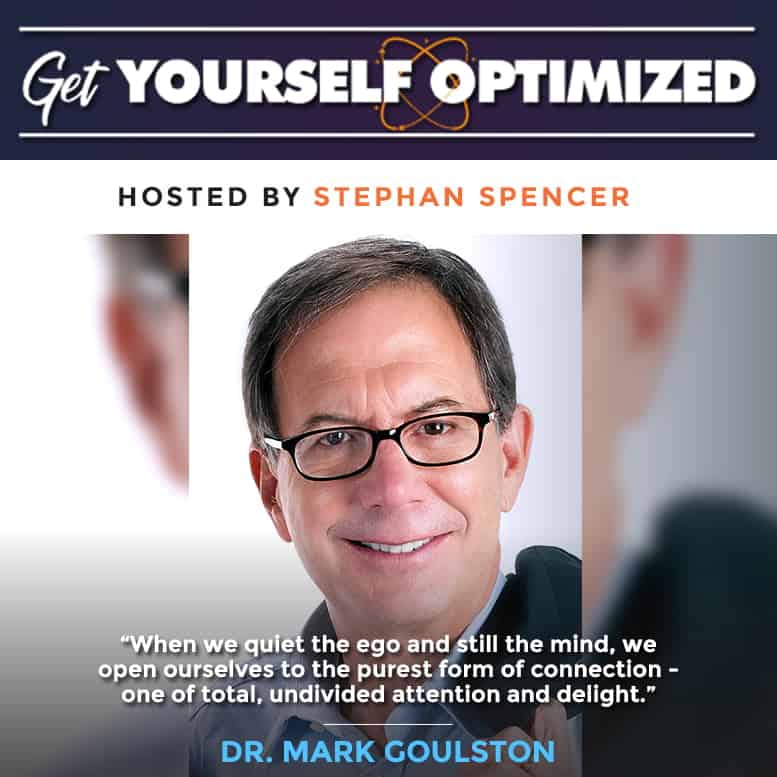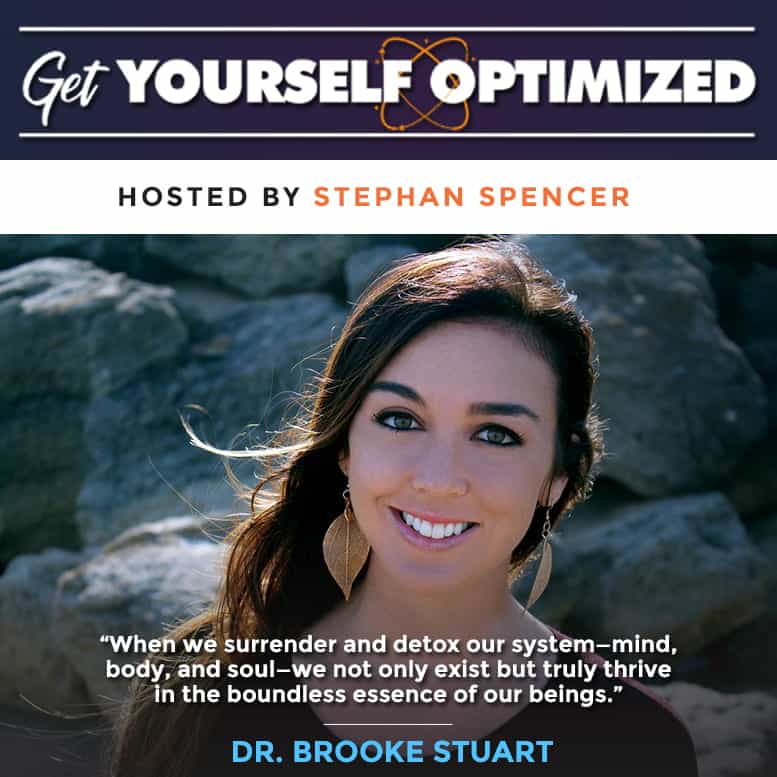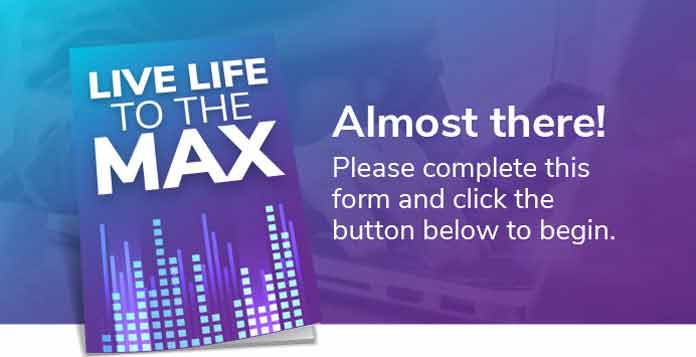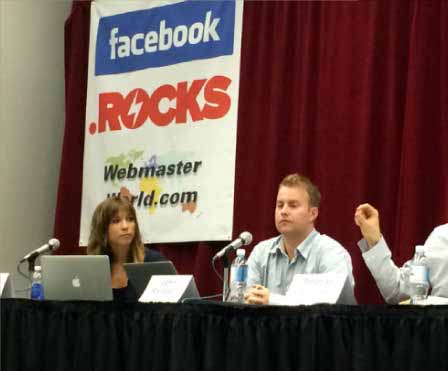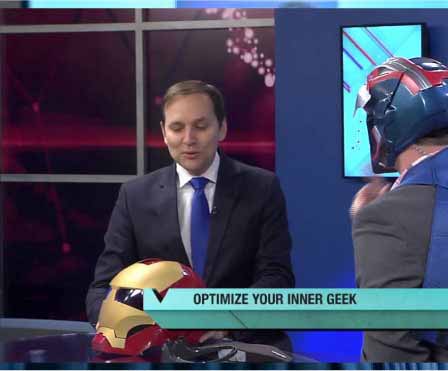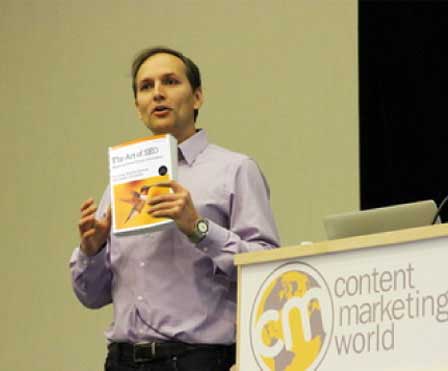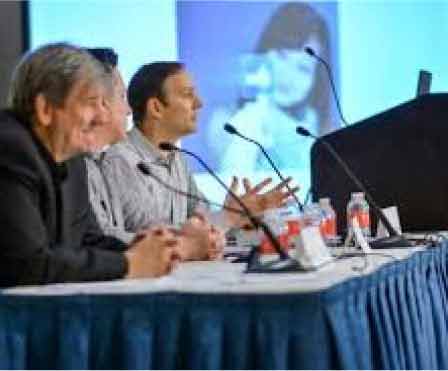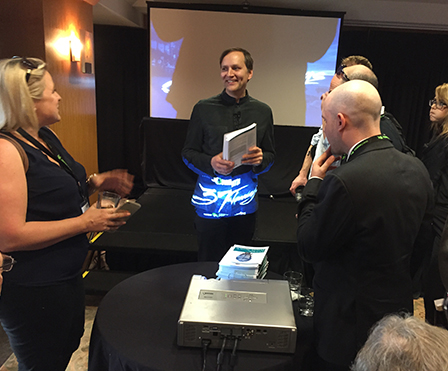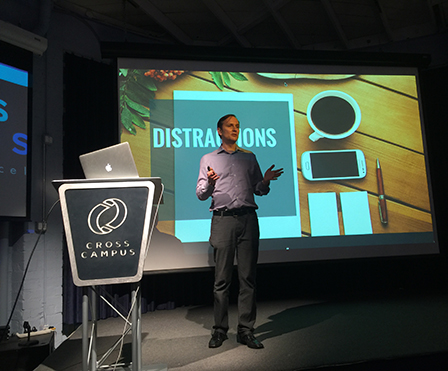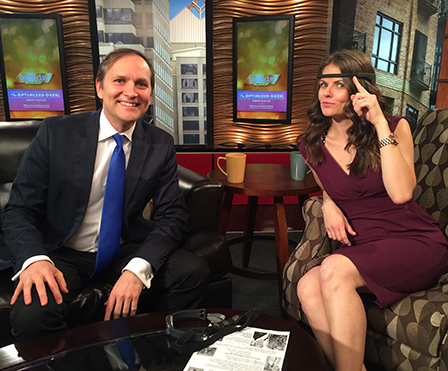In this Episode
- [02:12]Jonathan starts off by talking about his experience with tinnitus, which is a fairly common condition that means you’re hearing a sound coming from inside your head that no one else hears. He goes on to describe how he learned to cope with tinnitus and the roles that meditation and acceptance have played.
- [10:38]Has Jonathan’s tinnitus reduced over time?
- [12:03]After hearing about Stephan’s experience with tinnitus, Jonathan reveals that for many (perhaps most) people, the condition resolves on its own eventually.
- [12:45]Jonathan references a quote by Joseph Campbell, and explains what he has learned from it.
- [14:50]Stephan ties what Jonathan has been saying into Tony Robbins’ theory that there are six human needs, one of which is certainty. In response, Jonathan shares his thoughts on being certainty-driven.
- [17:03]What approaches are effective for dealing with uncertainty? Jonathan says there are three major options: mindfulness, movement, and cognitive reappraisal (or reframing).
- [20:41]Jonathan shares his thoughts on suffering. He believes it has a lot to do with grasping (such as at things we want to be true, or onto relationships that we don’t want to change or end) or trying to lock down the future.
- [22:38]What tangible next actions would Jonathan recommend based on what he’s been saying? Again, he suggests meditation and movement.
- [25:27]Jonathan responds to and elaborates on Stephan’s thoughts about how acceptance opens up a world of possibilities.
- [28:07]Mindfulness is life, Jonathan says, and can become the way you move through life.
- [29:22]Jonathan explains the concept of “good life buckets” from his newest book, How to Live a Good Life. Imagine that your life is three buckets: vitality, connection, and contribution. A good life is when you fill all three buckets as full as possible.
- [32:23]How does this help with decision-making? Specifically, how could it help someone decide whether to have another child?
- [34:10]Jonathan talks about how to snap out of going through life on autopilot.
- [38:19]One of the critical skills for going from survival to flourishing is the ability to say no, Jonathan reveals.
- [39:31]We hear about Jonathan’s process for doing deep work, which involves a lot of toil and making mistakes. He then reveals that he wrote three entirely different manuscripts for this most recent book.
- [44:15]How should someone develop their own framework or frameworks? 1. Devour knowledge and run experiments. 2. Learn from others. 3. Contemplation.
- [47:07]What should listeners do as the next step? He recommends his “Give 30” challenge: in one day, any time you have an opportunity to be kind that will take under 30 seconds, you have to say yes to the opportunity (up to 30 times).
Transcript
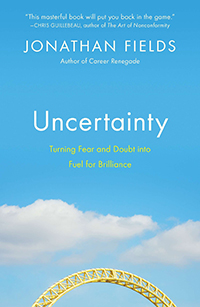
Hello and welcome to Get Yourself Optimized. I’m your host, Stephan Spencer. Today, it’s my distinct pleasure to invite you on the show Jonathan Fields. Jonathan is an award-winning author, serial entrepreneur, growth strategist, and podcaster. His top-rated podcast The Good Life Project gets millions of listens in more than 150 countries. Jonathan’s books include Uncertainty, Career Renegade, and his newest, How to Live a Good Life. His new book is a wake-up call and a path to possibility, complete with 30 days of inspiring, actionable explorations. Jonathan is regularly featured in media including the New York Times, Wall Street Journal, BusinessWeek, Fast Company, USA Today, O Magazines, Self, Slate, Vogue, Elle, Allure, CNBC, Today’s Show, and many others. Jonathan, it’s wonderful to have you on the show, thank you for joining us.
It’s great to be here with you, thanks.
I read a story on Huffington Post about you and in particular about your struggle with tinnitus and how that lead you to mindfulness meditation and it just was this transformational experience for you. I’d like you to share with our listeners that whole process. I watched your video, I forget which conference you spoke at where you talked about this, but it was powerful. Can you share with our listeners what tinnitus or the ringing in your ear, how that transformed your life?
Yes. The first time I actually shared that publicly was on stage in front of a thousand people which was a little bit rattling. There’s this thing called tinnitus or tinnitus, people pronounce it differently. Fundamentally, it’s this umbrella term which translates to you’re hearing a sound that’s coming from within the side of your head that no one else hears and we really don’t have any idea what it is, how to describe it or where it comes from, which is really comforting when a physician tells you that. It’s actually not all that uncommon, I’ve since learned that tens of millions of people just in the US actually have this. The challenge is of that larger group of people, the smaller group of people, probably somewhere in the order of less than 5% experience it at a level where it becomes extraordinarily disruptive and sometimes even pretty devastating to people’s lives. The way that it came on my life, I know the exact moment.
It was 2010, I was getting off a plane to attend South by Southwest in Austin Texas. I noticed kind of a funny tapping, almost counter type of sound in one ear kind of figure, I was flying a lot that point. It was just my ears and they needed to adjust. By the time I laid my head down the pillow that night, it had only gotten worse. Over the next few days, it kept getting progressively worse. I wasn’t sleeping because all I could hear was this thing. I came home, I went to my doctor and they basically said it’s probably just wanting to takes some stuff to decongest yourself, get a couple of weeks, it will be fine. It kept getting a little bit worse and it didn’t get better. I was getting more stressed out. Eventually, I went back to the doctor, went through a battery of tests, they said there’s nothing extreme that may be causing this. Give it time, see what happens. I started to hear different sensations in my other ear. At about a month and a half, I woke in the middle of the night one night and I heard this extremely loud high pitched electronic noise coming from both ears. I’m of an age when I was a little kid, TV is another device that used to omit a similar sound at much a lower volume.
If you left them on, you wake up after falling asleep in front of it in the middle of the night, you’re like oh, gotta go turn off the TV. I woke up in the middle of the night and I’m like oh, I must have left something on. I’m looking around and realize there’s nothing on, that this is actually coming from inside of my head. I just freaked out and melted down. That led to a series of months where I was just getting progressively worse and disorienting. At that same time, I was actually working on my second book. As I’m struggling, I did what everybody does, I go online, I go back to my doctor, tell him what’s going on. He’s like, you have this thing called tinnitus and sometimes it just goes away, sometimes it never does and there’s really nothing we can do for you, just deal with it. I go online and read doom and gloom stories of people wanting to do all sorts of terrible things. I got to a point where it was so extreme and it was causing so much dysfunction in my life that I was in a really dark place and I was struggling to work, struggling to create.
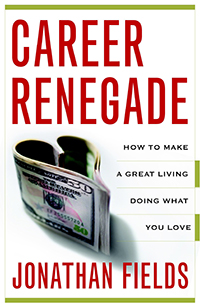
I finally just said instead of just maniacally trying to figure out how to make this go away and spending every moment of everyday trying to figure out how to distract myself from it and ignore it, what if I asked a bit of a different question, what if I kind of held a bit of a sort of a Buddhist Dualism and said I will continue to maintain hope that at some point, there’s something that allows us to leave my experience of life. At the same time, what if I assumed that this is me for life? What if I assume that it was here to stay? What then would I do? How would I start to build practices or change my behavior or learn to process it differently? And can I, in a way, so that I’m going from pretty extreme suffering to a place of being okay, at least baseline enough okay that I can live with this thing. I started to do a lot of research and it turns out that at that same time, I was working on this book called Uncertainty. I was in this abyss, this sea of uncertainty. I started to do a lot of research on how people deal with uncertainty and that led me to mindfulness meditation which I had been exposed to many times.
In fact, I taught yoga for many years and meditation but I had never really developed my own committed practice. I learned through a lot of research that this practice had actually been really effective in helping people with chronic pain. It doesn’t remove the pain but it allows you to drop the pain, it allows you to know it’s there and coexist with it and not experience so much suffering. I wondered whether that same thing could be done with the sound of my head that my brain was now creating. I did a bit of research and actually found a former rock drummer turned mindfulness space cognitive therapist who lived a couple of blocks from me and also had tinnitus. I made an appointment and I said, “Hey, could this work?” He’s like, “I don’t know.” He said, “It’s helped me a lot.” He said “Look, you kind of know this stuff, you know the instructions. But just to remind you, here’s what you’re going to have to do.” I went home that night, I sat down.
The good news and bad news is that the fundamental practice from meditation and mindfulness is that you allow your attention to sit on your breath and just let it stay on your breath. As things come to you and ideas and all sorts of distractions, you just acknowledge them and then you let it go and you come back to your breath. The thing is if something keeps on coming back over and over and over, part of the instructions is allow that to become the focal point of your attention for that moment. He told me this before I sat down, he said, “Here’s the thing, for at least the near term when you sit down, the only thing that you’re going to be able to think of is the sound in your head. You’re going to have to actually, that thing that you’ve been literally trying to do, everything that you can possibly do to not hear and to pretend that doesn’t exist.
You’re going to have to basically run to and surround yourself with and make that the focus of your attention. That’s what I did. It was terrifying, anxiety-producing. I relied on my yoga background, and breathing, and pranayama to allow myself to get calm enough to just be able to sit for a moment and do that. Over a period of months, I started sitting longer and longer. One day, I noticed that as I was sitting there sort of focusing on the sound, that’s my mantra, my mind drifted from it. That was the moment where I realized that I could let it go, that this might be a part of experience for the rest of my life. It didn’t have to define where I place my attention and it didn’t have to change me. I spent years on that, deepening into that practice. It’s become kind of an anchor in my life. It’s the thing that took me from a really dark place to becoming the first baseline okay.
Since then, as the practice has deepened, it’s taken me from being baseline okay to just also achieve other incredible benefits to be able to handle stressful, uncertain circumstances which as an entrepreneur and a creator, I make on a pretty regular basis with far more ease to be able to see so much more of what’s happening in front of me, to be able to let go of storylines and thoughts and distractions and bring my awareness back to what really matters and to be present. To become this thing that’s a really beautiful gift in my life. When I wake up every day, the first thing I do is I roll out of bed and I do my pranayama for about 3-5 minutes and then I just sit in my practice and I expect that will be that way for life.
The tinnitus has not reduced overtime? It’s on the same level?
No, as I stand here talking to you, my head is surrounded by it but I’m okay and that’s a place where when I was in the depths of it, I didn’t think it was possible to ever be okay, but in fact, it is. And again, there are many people that have this on various levels and it’s truly not so much of a thing for them. Also, one of the really challenging things is that nobody else can hear it and nobody else can see it and nobody else can touch it, so nobody can understand how loud it is, what the frequency is, how it changes over time. It’s hard for those who don’t experience it, even though those who have this condition but in a very different way or in a different level for you where it’s really none interfering in their lives at all. If you’re the person where you’re just really experiencing it very differently, it’s brutal and it can also be incredibly isolating. But for me, thankfully, the practices that I developed had made me okay with it.
I had it myself back in 2009 and it went away finally after some months but it drove me crazy and I went through all these tests, hearing tests, MRI scans, and everything. They just couldn’t figure it out, they couldn’t help me, but eventually, it went away.
Yes, I think for most people, that’s what happens. I did the same thing. I went through a hearing test, I had the scans and everything like that and thankfully everything came back fine. And for a lot of people, over a period of months, it just kind of eases which makes it frustrating because you never know where it came from. It’s been a really interesting experience for me to understand that something can drop into your life as a source of great suffering and over time become a source of great teaching.
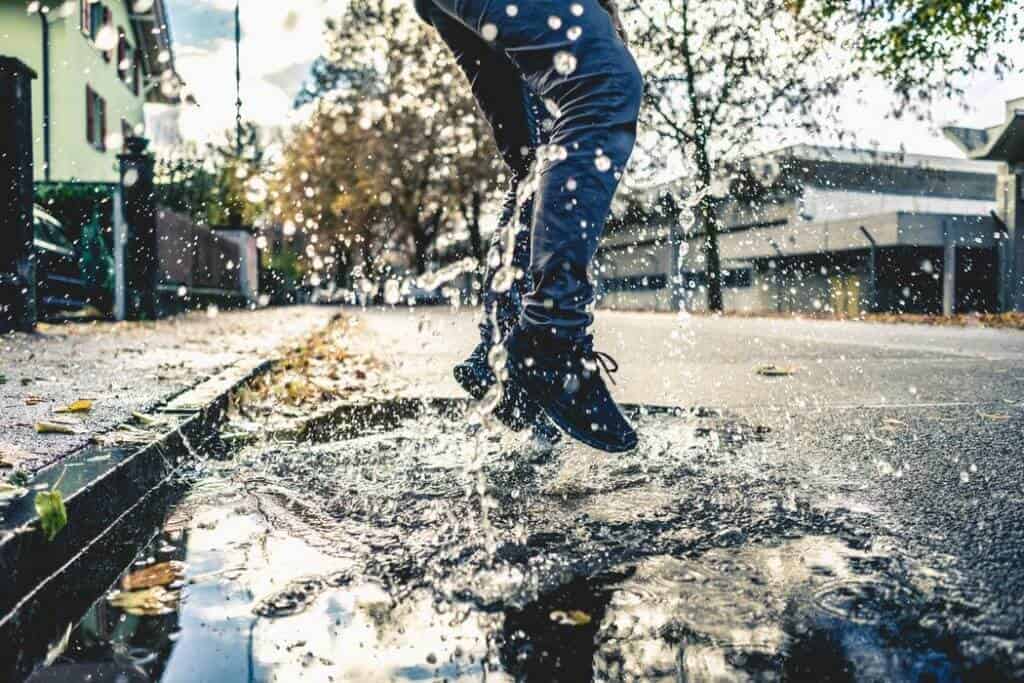
And you shared a quote from Jessa Campbell in your talk, that was really profound, that quote about finding your treasure.
When you wade into the abyss, there lies your treasure. I’m sure that’s not the exact quote but it really is. One of the things that I’ve learned over the years, I spent a lot of time studying uncertainty. When we have to go to that place and exist and make decisions and choose, when we don’t know what the ground is underneath us and we don’t have perfect information or when we’re completely uncertain about whether we’re good enough, whether what we’re working on is going to work. For most of us, it’s brutal. It is a really tough place to be. In fact, the fear center in the brain becomes largely activated when we’re forced to make decisions in the face of uncertainty. That makes us feel physically uncomfortable, sometimes to the point of becoming physically ill.
Part of my quest has always been as a creator and entrepreneur. You can hear right now the live New York experience in the background there. It’s always been how do I go to that place and figure out how to be okay and not fall apart because I’m wired to create, I’m an entrepreneur and a creator and I will always be that way. I’ve always suffered a lot, so the interesting thing for me is that this experience really ties in this longer-term exploration of the psychology and physiology of uncertainty that has to be there in the context of any significant creative endeavor. It’s also made me realize that while most of us try and snuff out the uncertainty, either by backpedaling or moving so quickly through it that we don’t have to feel it, the flip side of uncertainty is possibility. When you move from a place of unknowing to knowing or uncertainty to certainty, that same process removes possibility and we don’t want that. For me, it’s been a process of learning how to be in that place and be okay there so that I really can tap into whatever my creative potential is.
Tony Robbins talks about how a lot of people on this planet are uncertainty driven, there’s six human man needs according to him and one of them is certainty. There’s also variety, significance, love/connection, growth, and contribution. For those people who are certainty driven, which is the majority apparently from what you’re saying, it really boxes you into a very mundane life. What are your thoughts on that?
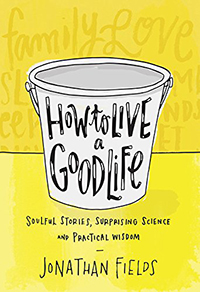
I completely agree. We are maniacally driven by the need for certainty. Another word, if you’re not latching onto the word certainty, another word for certainty is security, it’s the same thing. If you look at Buddhism, one of the fundamental teachings is that life is suffering. You kind of dig down deeper in that, it’s much more nuanced. One of the deeper understandings is at least the way that I’ve seen it and explored it is that life in the pursuit of something that can never be had is very much suffering. One of the things that I know, the only thing that I’m certain about is that certainty is not possible. There’s no such thing as absolute security, there’s no such thing as 100% certainty. The moment that there is, all possibility has left the building. Life without uncertainty is also a life without possibility. It’s not really what we want, so I do agree with that. We are wired to not want to feel the unease of living without certainty. It’s physically uncomfortable, so we do almost anything we can to not be there. With the exception of those people who develop practices to somehow figure out how to be in that place because there’s something in them that says this actually has to be there for me to do the work that I’m here to do.
What sort of practices would help you with being okay with the uncertainty? Besides, we just talked about meditation and mindfulness, what other practices might be more fitting for the other people if they’re not kind of wired to do the mindfulness thing?
Yes, there are three big three levers that I’ve seen. One is mindfulness or meditation, one is movement. Movement, a lot of people look at exercise. You do this because you need to be healthy, it’s going to push off disease, push off illness. Or if you’re younger, you’re very likely doing it for cosmetic reasons, you want to look great. Or you may do it for performance, you want to be physically fit. What we now know, there’s a ton of research on how exercise and movement actually rewire your brain. It has a lot of similar benefits to your neural circuitry and your ability to reclaim a sense of ease to move from a place of stress and anxiety to a place of calm and optimism when you’re also challenged with uncertainty. Actually, what you’ll see is that a lot of the world’s greatest creators and entrepreneurs, to writers, to artists, to screenwriters, intuitively have figured this out and made exercise a regular part of their day. At the third lever, it’s something that therapists call cognitive rephrasal but sort of the common terminology around it is called reframing. It’s a process of telling a different story.
Most of the anxiety that comes from being in that uncertain place comes from fear of failure and fear of judgment. That’s usually based on the story that you’re telling yourself that the doom state scenario is the most likely scenario. If you can actually catch yourself telling that story and say to yourself huh, this is the story that I’m telling that’s making me uncomfortable, is there a different possible story that’s equal, if not as likely, that I can tell myself about this circumstance? Can I keep returning to that story, is there a reframe for this experience that comes from a place of possibility and engenders calm rather than comes from a place of failure and engenders paralysis?. Those three tools taken together are actually incredibly effective at helping you not only to survive this window of uncertainty that has to be there for high-level creativity but actually flourish in that space.
Most of the anxiety that comes from being in that uncertain place comes from fear of failure and fear of judgment
The reframing is so powerful. In fact, I was recently interviewed by Byron Katie and she was talking about eliminating suffering through the reframing process, the four questions and the turnaround process which she calls the work so that you’re not believing the thoughts that just come to you. There’s a lot of times that thoughts are not even true.
Yes. Her whole approach just tests everything and asks is it true? What we find is most times it’s actually not.
Yes, or if we think it’s true with a better reappraisal, we’ll actually realize that we can’t possibly know for certain that it’s true and that it actually doesn’t help serve ourselves and our lives, it’s not empowering, it’s disempowering. Therefore, it’s something to shut. Let’s talk a bit about the Buddhist concept of suffering, life is suffering and what’s your philosophy on this? Katie’s philosophy is that suffering is something that you can eliminate through the work. In Buddhism, they say that life is suffering. I’ve also heard that pain is inevitable, suffering is optional, I see that on bumper stickers and stuff. What’s true for you with regards to suffering?
Yes, I think what’s true for me is that a lot of suffering is about grasping. A lot of suffering is about illusion and grasping, it’s grasping of the things that we want to be true or to relationships that we don’t ever want to change or end. It’s also living in an illusion without sort of doing the work that Byron Katie was saying, like testing is this real, is this true? I guess the third thing also is trying to lock down the future which is really just sort of another manifestation of grasping, its really trying to hold on as tightly as humanly possible. Trying to make everything in your life permanent is something that can’t help but end in suffering because nothing is permanent. It’s painful for us to look at life that way, but that’s the truth of life. The truth of life is that everything ends at some point including us, and we spent the vast majority of our energy trying to make the impermanent permanent, trying to make the uncertain certain, and trying to make the illusion true, that causes a huge amount of suffering. It’s really easy to say just stop doing those things, but we are who we are, we’re human and most of us are wired this way for a reason. There’s a lot of theory around what those reasons are, it may be historically that it was based on survival. The more uncertainty we were exposed to, the less likely that we were derived long term because we’d just be surrounded by the unknown which in prehistoric days is equated to danger, risk of life and limb, but it really doesn’t anymore. I think a lot of that wiring is still with us.
What would be the action that you’d recommend people take, tangible next action based on this?
Test your assumptions. There’s a couple of actions. One is to meditate and move. I think those two things are really powerful practices, they’re not interventions. They take root over time, but they really start to rewire your brain to get more comfortable with the space of just being present and of letting go. Mindfulness meditation, I think it’s exceptionally good at this because the practice is about dropping, it’s not just about focusing, it’s about dropping. It’s about allowing and dropping. Instead of a traditional mantra-based practice where it’s much more about attention and focusing and excluding, mindfulness practice is about allowing. It accepts the fact that a thousand times, as you said, things will come to you and let them come.
Instead of a traditional mantra-based practice where it’s much more about attention and focusing and excluding, mindfulness practice is about allowing.
The practice is to notice it and then let it go. Allow it, notice it, let it go, allow it, notice it, let it go. If you spend every day sitting for 20 minutes allowing, noticing and letting go, over a period of days, weeks, months, and then years, you start to get a lot better at that. And then the really cool thing is that practice doesn’t just inform your time on the mat, it informs your time in life. It carries into the days with you. You notice yourself, this isn’t going the way I wanted. I’m in this place where I’m telling this story which is massively destructive, I’m noticing it and then I just let it go. It may keep coming back but the practice of continuing to notice it coming back and letting it go eventually makes it so that you can just start to let it go with much more ease. It doesn’t rattle you, it doesn’t destroy you, it doesn’t tire you. That’s one of the reasons why I think mindfulness in particular, as a form of meditation, can be super effective at navigating the process of letting go and sort of getting comfortable with the realities of impermanence in life. That’s surely the root of my practice.
That’s like the allowing rewires your brain into this new state where you’re not stuck in resistance, where you’re trying to resist things that you don’t like because what you resist persists. As I learned in India from the oneness monks at Oneness University, if you just let the tiger devour you instead of running away from the fear or the thing that’s uncomfortable, you just let it come and devour you like the tinnitus or the fear of death or whatever it is, you just let it devour you and accept that okay, that’s actually not as bad as I thought it would be. Then, a whole world of possibilities becomes available to you that you didn’t even see.
I think it’s very true. And again, this is all stuff that you hear and you’re like, “Yeah, that makes a lot of sense. I’m going to do that.” The concepts make sense, they’re much easier to think about. The reality is almost everything that we do that helps is rooted as a daily practice. You don’t often feel the benefits the moment that you start practicing, the benefits accumulate over time and I think that’s very often one of the great challenges. We’re all sort of wired for instant these days, we don’t like the idea of having to wait for anything. We want instant rewards for our efforts. The practice doesn’t really work that way. So many people just stop because either they don’t feel the benefits immediately or they feel like they haven’t mastered it immediately, they’re not “good” at it immediately. I think that’s a very Western mindset where when you sit down to practice, any of these things, whether it’s prayer, whether it’s meditation, whether it’s exercise, your only job is to show up. The only expectation is that I showed up. To just then allow the practice to unfold as however it needs to that day, and know that over time if just keep showing up, things happen.
It makes sense and it seems like you know this when you hear as a listener, I’m imagining you kind of feel like, “Yeah, this makes sense.” I know I should be meditating and then you don’t do it. It doesn’t become part of your daily practice. I know this all too well because I’ve lived it, I took a mindfulness meditation course and I got the CDs of Jon Kabat-Zinn and I never even opened it. I never listened to it, then I had the whole tinnitus thing happen to me and I still didn’t get the lesson. But then I went to Tony Robbins’ event later that year and that’s what shifted me. Different strokes for different folks I guess, but I’m literally unrecognizable and a completely different person from whom I was pre-Tony Robbins doing the firewalk and unleashed the power within. For you, it sounds like the mindfulness meditation and the daily practice of that, not just like oh yeah, that sounds good, I’ll do more of that when I get time but actually making it part of who you are on a daily basis.
I think that’s true. The final thing is the daily practice is the practice. Mindfulness is life. There is mindfulness seated practice, there’s an exercise, like the moment where you exercise throughout the day. Whatever your practice is, that’s your practice. What you’re really working towards is that, these lessons, these ideas, they change your state on a more persistent basis. This just becomes the way you move through life. My seated practice may happen at [6:30] in the morning, but what I know is that if I have to have a really stressful conversation or an uncomfortable conversation at 4 o’clock in the afternoon, there’s a really good chance that I’m going to feel much more comfortable doing that. It’s not going to rattle me nearly as much simply because over a longer period of time, I’ve developed this morning practice and it changes your wiring persistently 24/7. It lets you move throughout the day differently.
Mindfulness is life.
That’s awesome. Let’s talk about your newest book, How to Live a Good Life. You have a model I know that you talk about, good life buckets. What is that?
It’s a really simple idea, kind of deceptively simple and that’s the point. I realized that there’s no need for another “self-help” book in the world that is really just information-based. Most of what we’ve needed to know, we’ve probably known for thousands of years yet we still walk around suffering a whole lot. I got curious about why that was, and at least my theory is that so much of the information is delivered in a way where it’s very heavy, its complex, it’s dogma. I wanted to create a model that was just so easy that you heard it once, you remembered it for life and it was so actionable that it actually guided your behavior. You could put it into use the moment that you heard it. I experimented with a lot of different ideas and finally came up with this really simple visual which is three buckets. Imagine that your life is three different buckets. One bucket is called your vitality bucket and that’s about optimizing your state of mind and body. One bucket is called your connection bucket, that’s about cultivating deep and meaningful relationships. One bucket is called your contribution bucket, and that’s about your contribution to the world. Many people will call that work although I’m always cautious to say that that may or may not be the thing that you get paid to do. That’s entirely okay. What’s a good life then? A good life is when you fill all three buckets as full as they’re capable of being, and then you create a daily practice of just checking it everyday, noticing how full is each bucket.
And then, going around and doing a little something everyday to keep topping them off. It’s a really simple model. Before I put that into the world, we spent a couple of years developing it and then also testing it across a wide number of people, across different programs and groups that I’ve worked with over the years because I wanted to make sure that it was robust and folks have used it to do everything from guiding career choices, to helping decide whether to have a third child. And the feedback that we got was that it is so straightforward that you almost discount its value, but the beauty is that it’s so easy. It’s really easy to just pull up in a blink of an eye and then use it as a decision-making tool and an action taking tool. That’s what was most important for me. I didn’t have an interest in writing a book and introducing a model that was just sort of a rehash of everything else and didn’t lead to behavior change. My deeper interest is how do I inspire a shift in behavior so that people can experience life differently rather than just how can I create something that’s interesting and entertaining.
Most of what we’ve needed to know, we’ve probably known for thousands of years yet we still walk around suffering a whole lot. Click To TweetLet’s go through the process then. Let’s say that I’m at a decision point of whether to have a child or have another child, what’s the process that I’m gonna go through to make that decision.
Yes, it’s going to be massively individual for each person, especially with that particular thing. But in the context of the story that was shared with one of our students or participants in the program was how she had taken this model and sat down with her husband. They said, “Let’s have a conversation, let’s think about this.” They laid out the model of the three buckets and they were kind of asking themselves, “Okay, if we were to go ahead and try to have a third child, how would this affect our connection bucket? How would it affect our contribution bucket? How would it affect our vitality bucket? How would it affect our ability to fill each one these? How would we add to them? And how would it potentially take away from anyone of them?” They kind of went through with this analysis. What they decided was that this would actually, in their mind, end up filling all three buckets. They made a whole bunch of changes in the way that they both fill their contribution bucket in the work that they both did in anticipation of having another child so that they would be able to actually continue to contribute meaningfully and at the same time really honor their relationships with each other, with their other kids, and keep their connection bucket full. It leads to a whole bunch of shifts and things in anticipation of once they made that decision. You just really need to see how people just super individualize using the buckets as a decision-making tool.
Awesome. One thing that you talked about in the book is how to get off of autopilot because we’re so much into our robotic consciousness most of the time. How do you snap out of that?
Yes, it ties in a lot with the conversation that we’ve been having so far. One of the big awakenings for me was that so much of the life of so many people is reactive. Busyness has been named as a piranha on the planet. We’re all just busy and it’s killing us, it’s destroying us. I actually have maybe a bit of a different, more nuanced take on busyness. I don’t really have a problem with busyness. If I open my eyes and I’m busy meditating, breathing, exercising, creating great food, doing work that I can’t get enough of with people who I just love being around, being in service with people who I’m deeply connected to and spending time engaging activities that fill me up. I’m busy from the moment I open my eyes, the moment I close my eyes at night with that, I’m okay with that. It’s all intentional and it’s chosen. I’m saying yes to the things that matter most and no to the things that don’t. I’m good with being busy like that. The challenge happens when we’re busy in a way that’s mindless and reactive. That in fact is the common state of most people is that you open your eyes and from the moment you open your eyes, you’re reacting. You’re reacting to technology, you’re reacting to other people’s stories, to other people’s agendas, to other people’s needs and demands.
One of the big awakenings for me was that so much of the life of so many people is reactive.
We end up moving through life feeling like we’re constantly falling behind. We’re never actually accomplishing anything in any domain that genuinely is meaningful to us, which means that we’re feeling less and less and less of a sense of purpose or meaning in our life. We don’t see any way to break free because we know that every moment of every day seems to be full. We think to ourselves, the only way for me to reclaim a sense of agency, a sense of intention and purpose and meaning, is for me to find more time rather than say “no no no no.” The answer isn’t that I need to create four more hours in the day and find a way to create 20 hours a day. The answer is that I need to actually hit pause and look at the choices that I’m making, or more accurately the choices that I’m not making, the choices that I’m surrendering.
And, move from a place of mindlessness and reactivity and just responding to what’s in front of me to a place of mindfulness and intention and weighing the things that I actually devote my energy to and saying yes or no from a place of actually asking whether this matters to me. What you find is that when you start to come from a place of discernment like that, a place of intention and agency, you don’t have to make more time by adding hours to your day. You find that you’ll start to say no to a ton of stuff that really is just the compounding demands of a whole lot of other people. That can be something as small as scanning your emails, scanning Twitter, scanning your Facebook feed. These are all things where it’s a thousand other people telling you what they think is important for you to pay attention to today. It can be fun, but if you end up spending hours doing that and the average person now does having no understanding that they’re doing that, that’s actually replacing the time that would let you do things that were deeply meaningful to you. That’s how most of us live.
It just reminds me of an article I just read in The New York Times by Cal Newport. Quit social media, your career may depend on it. All this distraction and all these other people’s priorities, if you manage your to-do list for today based on what’s in your inbox, you’re managing your life based on other people’s priorities. If you get sucked into social media and all the distraction type stuff, then you’re not able to focus your attention on the things that really matter. You don’t move your life forward, you’re not operating with intention.
Yes, absolutely true. One of the critical skills to go from survival to flourishing, to go from mindless activity to mindful intention is the ability to say no. But before you can say no, you actually have to become just the slightest bit aware so that you can start to ask the question, does this matter?
Exactly, so it becomes all about attention management, not time management, and being mindful of what you’re focusing your attention on. Yes, interesting. I interviewed Cal Newport, the author of Deep Work and the author of that New York Times article I just mentioned recently on this podcast, on Get Yourself Optimized. Have you developed kind of a deep work sort of practice? You have these practices for mindfulness, what about for doing deep work like writing a book or creating online courses or something? Is there a process or methodology that you found very effective for creating some major work?
Yes, a lot of toil and struggle and fitful threading and making a lot of mistakes. I wish I could say that there was a universal process that applied to everybody but I actually don’t believe there is. I don’t believe in formulas, I believe in frameworks. I believe in decision-making tools and a lot of dynamism in the process. I can tell you what my process is for writing a book, but I can also tell you that it changes because I’m constantly analyzing it. For this book, for example, I wrote three entirely different manuscripts. Part of the reason is because the first one, I wrote in the way that I had written the first two books which is a more nuanced deep dive into the science and philosophy which is just kind of what I was really interested in. I handed it to my publisher and they said, “This isn’t it.” I said, “Huh, okay.” We had a meeting, we agreed what the new direction should be, I went out and I wrote the second manuscript.
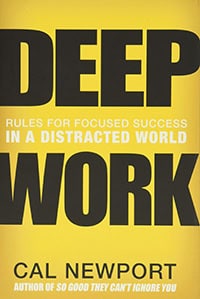
I handed it to my publisher and it came back to me and again said, “This isn’t it, and we’re not sure what to tell you.” Actually, what I said is not repeatable in public, not to them but just to myself. It was a really challenging situation for me. What I realized was that this book had to be a different kind of book. This had to be more of an operating manual. While I was really interested in geeking out on deep dives, the people that I was writing for, the person that I was writing for, that’s not their life. That’s where I really decided that this had to take stuff that was thousands of years old, draw from a lot of different worlds and distill it into something which is really, really simple to digest. My reader had most of their bandwidth left after that to actually do the work. The process for me was okay, distill, distill, distill, simplify, simplify, simplify. Serve it up in a format where it was really digestible. You can cherry-pick chapters in random orders, you don’t have to read it end to end. There’s no one unique system that has to be consumed and learned and mastered. It’s designed for somebody who’s feeling already overwhelmed and overburdened. The idea is this is not going to require you to have to add to that burden or that sense of overwhelm just to understand what to do. It took me three tries to understand that that’s the book that I needed to write.
When I finally wrote it, the publisher was like, “Yes! This is exactly what we needed, we just didn’t know how to tell you that.” From a larger-scale perspective, if you talk about a deeper process, for me in terms of spiritual growth, there’s a couple of ideas that I could share with you. One is it’s got to start with self-discovery, self-knowledge, and self-inquiry is a really important process that most of us never dive into. Understanding who you are, understanding your values, understating your strengths, your capabilities, understanding your worldview, your lens, the models that you project out, understanding the nature of your social orientation. There are a whole bunch of tools and assessments and inquiries that I look at for self-discovery that I think are really, really important.
Step one is understanding who you are and what matters to you because how can you be intentional? How can you say yes or no to something unless you actually understand why you’re saying yes or no to them which requires you to know something about yourself. We all skip that stuff. Unless you go and seek it out outside our traditional education, nobody really teaches that in the Western world. Self-inquiry, self-discovery is sort of at the seat of everything. And then from that emerges series of daily practices that continue the process of opening and discovery and cultivating equanimity over time. To me, the deeper starts with self-inquiry, and then it moves out into the way that you interact with the world and it moves on to the way you cultivate sustained states of optimism and being more in a place of being generative and calm and joyful. I think those are three things that I actually work to try to experience as much as I can these days. I’m still very much a work in progress by the way.
Aren’t we all?
Yeah, I think so, that would be my work for life.
You said that you believe in frameworks. How does one develop their own framework or frameworks?
Probably a couple of ways. One, devour knowledge. That can be through your own life experience. At this point, I’ve been running experiments for the better part of my 51 years on the planet and really deconstructing them. Two is to learn from others. I’ve spent years now finding what I call embody teachers, people who don’t just write or speak about things but actually live it, and sitting down with them and asking them questions the same way that we’re having a conversation. Just saying, “Hey listen, what can I learn from you that can in some way inform the way that I bring myself to the world?” Part of it I think is also contemplation. You’ve got discovery of data, you’ve got discovery of teachers, and then you’ve got integration. I think contemplation is something that we don’t spend a lot of time valuing anymore.
We used to spend a lot more time valuing the contemplatives like profound wisdom comes out of really spending time with your thoughts and taking all of this external and internal data and just letting it germinate and really thinking it through and questioning, questioning, and questioning. I think most of us have built our lives so we don’t allow the space for that anymore. Increasingly, I’m trying to build more of that into my life to a point where overtime those frameworks emerge. If you ask my team what my killer app is, they’ll probably tell you one of two things. One is pattern recognition, it’s just kind of the way that my brain works. I devour a massive amount of data and I end up seeing the way that things relate in a way that maybe some others don’t see. The other is understanding storytelling and language. To a certain extent, I think that may just kind of be my thing, the way that my brain is wired and I figured that out overtime. It’s developing frameworks that are robust. I think that’s a really hard thing to do.
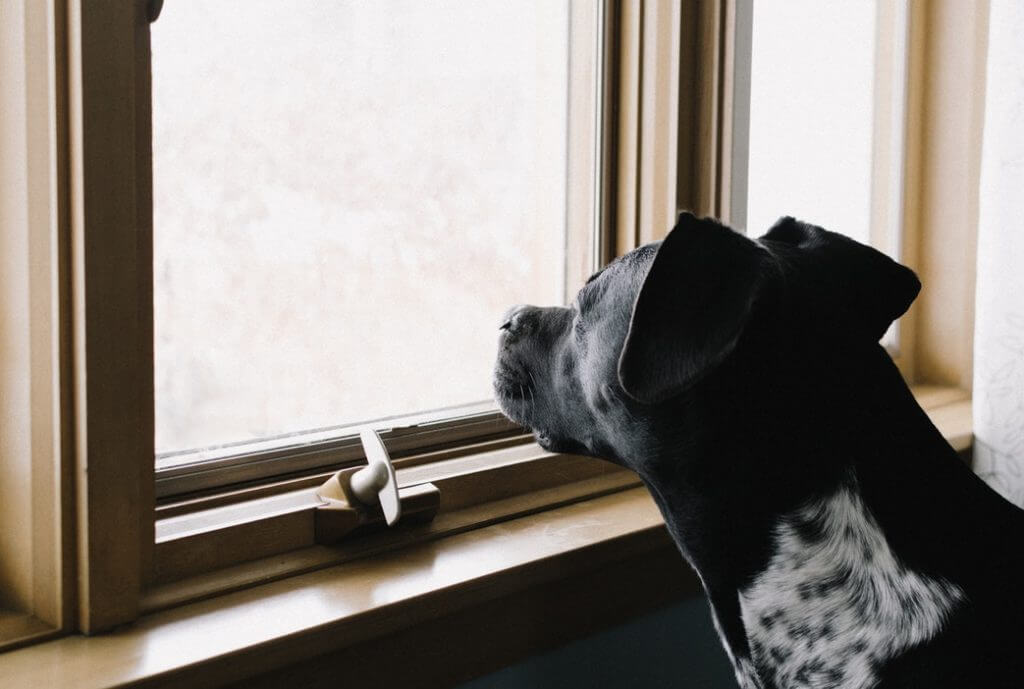
Yes, but sitting down and thinking and not just going through the normal business of your day is a critical part of this process. It reminds me of a piece of advice I heard from Keith Cunningham saying that you should have a thinking chair. He only sits on that when he’s going to do deep thinking. He actually schedules time to think.
Yes, I love that. As for me, my thinking chair is nature. I’ll get outside, I’ll get in the woods or by water on a very regular basis because that’s my special place.
Yes, me too. Awesome. I know we’re at a time here. What would you recommend our listeners do as a next step? Pick up your book, multiple books of yours? Listen to your podcast, The Good Life Project, or maybe take an online course or something that you teach, what would be the next step?
I’m actually going to offer something else. If you’re curious about the book or the podcast, that’s awesome, go check it out. Let me offer an invitation or a bit of a challenge, I call it my Give 30. There’s a whole chapter in the book about this, about the fact that generosity is tremendous for society but it really is tremendous for us on a personal level. I have a fun challenge. My Give 30 is in a one day window, see if you can anytime that you have an opportunity to be kind. It doesn’t have to be a big, grandiose thing. This can be holding someone’s hand. It can be the smallest little thing, offering somebody a packet of sugar at the local coffee store, wherever it might be, acknowledging somebody who’s serving you behind the counter and say, “Hey, thank you so much, I really appreciate you taking care of me.” Smallest little thing. Anytime that you have an opportunity to be kind, and it will take less than 30 seconds to do that throughout the day. You have to say yes to it up to 30 times.
Your maximum investment in a full day is going to be 15 minutes. Do that. Set aside a day, make it tomorrow if you want for your Give 30. Say anytime I have an opportunity just for this small act of kindness or generosity that will take me less than 30 minutes, I have to say yes. I have to do it. The change that will happen in you is really cool. Number one, people very often think 30 times, that’s way too much, I’ll never have that. What you find is as soon as you opened to this, as soon as you say this is my Give 30 day, you’ll realize that these opportunities are constantly around us all day long every day. It becomes really easy to do, actually. The other thing that you find is that your day just gets better. Not only have you made a difference 30 times in 30 people’s lives, even the smallest little difference, you really feel good. It rewires, it changes your brain chemistry and it’s really powerful to you. Instead of doing something that’s going to benefit me in some way as we wrap this up, I’m going to offer that as an invitation so that you can go out and do something that’s going to help 30 other people and at the same time leave you feeling really good.
I love that. Alright, I accept the challenge and I hope our listeners will do the same.
Awesome.
Thank you so much, Jonathan and listeners, be sure to check out Jonathan’s websites, goodlifeproject.com and jonathanfields.com. Check out his newest book, all his books. Thank you so much, Jonathan. I really appreciate you sharing your wisdom and experience and your life’s journey with us.
Yeah, it’s been my pleasure. Thanks so much for having me on.
Alright. And thank you, listeners. We’ll catch you on the next episode, this is Stephan Spencer signing off.
Important Links
- Jonathan Fields
- Twitter – Jonathan Fields
- Facebook – Jonathan Fields
- The Good Life Project
- Uncertainty
- Career Renegade
- How to Live a Good Life
Checklist of Actionable Takeaways










 About Jonathan Fields
About Jonathan Fields
A New York City dad, husband, and former SEC and mega-firm lawyer turned award-winning author, serial entrepreneur, and expert in applied personal development and human potential, Jonathan has founded a number of transformational wellness-companies, taught everything from yoga and mindfulness to entrepreneurship and innovation, and led workshops, events and retreats around the world for thousands.
His newest book, How to Live a Good Life: Soulful Stories, Surprising Science and Practical Wisdom, was a USA Today bestseller, and serves as an operating manual for a life well-lived. His prior book, Uncertainty: Turning Fear and Doubt Into Fuel For Brilliance, was named #1 Personal Development Book of the year by 800-CEO-READ.
Disclaimer: The medical, fitness, psychological, mindset, lifestyle, and nutritional information provided on this website and through any materials, downloads, videos, webinars, podcasts, or emails is not intended to be a substitute for professional medical/fitness/nutritional advice, diagnoses, or treatment. Always seek the help of your physician, psychologist, psychiatrist, therapist, certified trainer, or dietitian with any questions regarding starting any new programs or treatments, or stopping any current programs or treatments. This website is for information purposes only, and the creators and editors, including Stephan Spencer, accept no liability for any injury or illness arising out of the use of the material contained herein, and make no warranty, express or implied, with respect to the contents of this website and affiliated materials.
LOVED THIS EPISODE
Please consider leaving me a review with Apple, Google or Spotify! It'll help folks discover this show and hopefully we can change more lives!
Rate and Review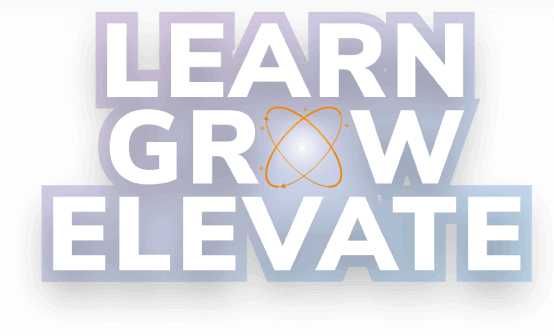
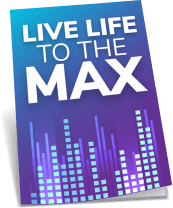
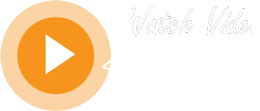





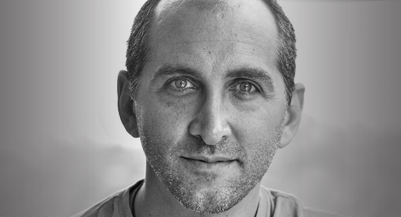
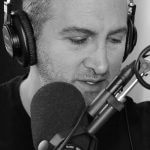 About Jonathan Fields
About Jonathan Fields